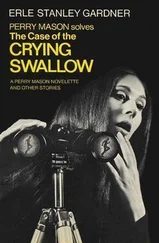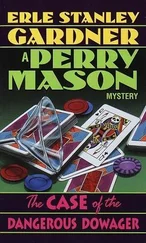Daniel Gardner - The Science of Fear
Здесь есть возможность читать онлайн «Daniel Gardner - The Science of Fear» весь текст электронной книги совершенно бесплатно (целиком полную версию без сокращений). В некоторых случаях можно слушать аудио, скачать через торрент в формате fb2 и присутствует краткое содержание. ISBN: , Издательство: Penguin Group (USA) Incorporated, Жанр: Психология, Политика, Прочая научная литература, на английском языке. Описание произведения, (предисловие) а так же отзывы посетителей доступны на портале библиотеки ЛибКат.
- Название:The Science of Fear
- Автор:
- Издательство:Penguin Group (USA) Incorporated
- Жанр:
- Год:неизвестен
- ISBN:9780525950622
- Рейтинг книги:3 / 5. Голосов: 1
-
Избранное:Добавить в избранное
- Отзывы:
-
Ваша оценка:
- 60
- 1
- 2
- 3
- 4
- 5
The Science of Fear: краткое содержание, описание и аннотация
Предлагаем к чтению аннотацию, описание, краткое содержание или предисловие (зависит от того, что написал сам автор книги «The Science of Fear»). Если вы не нашли необходимую информацию о книге — напишите в комментариях, мы постараемся отыскать её.
The Science of Fear — читать онлайн бесплатно полную книгу (весь текст) целиком
Ниже представлен текст книги, разбитый по страницам. Система сохранения места последней прочитанной страницы, позволяет с удобством читать онлайн бесплатно книгу «The Science of Fear», без необходимости каждый раз заново искать на чём Вы остановились. Поставьте закладку, и сможете в любой момент перейти на страницу, на которой закончили чтение.
Интервал:
Закладка:
I wish I could amaze and astound the reader by writing precisely what you have guessed. I cannot. I can, however, say with great confidence that your answer to the second question was powerfully influenced by the number nine.
I know this because the questions I’ve asked come from a study conducted by German psychologists Fritz Strack and Thomas Mussweiler. They asked people two versions of the Gandhi questions. One version is what I’ve repeated here. The other began by asking people whether Gandhi was older or younger than 140 when he died, which was followed by the same direction to guess Gandhi’s age when he died. Strack and Mussweiler found that when the first question mentioned the number nine, the average guess on the following question was fifty. In the second version, the average guess was sixty-seven. So those who heard the lower number before guessing guessed lower. Those who heard the higher number, guessed higher.
Psychologists have conducted many different variations on this experiment. In one version, participants were first asked to construct a single number from their own phone numbers. They were then asked to guess the year in which Attila the Hun was defeated in Europe. In another study, participants were asked to spin a wheel of fortune in order to select a random number—and then they were asked to estimate the number of African nations represented in the United Nations. In every case, the results are the same: The number people hear prior to making a guess influences that guess. The fact that the number is unmistakably irrelevant doesn’t matter. In some studies, researchers have even told people that the number they heard is irrelevant and specifically asked them not to let it influence their judgment. Still, it did.
What’s happening here is that Gut is using something psychologists call the anchoring and adjustment heuristic, or what I’ll call the Anchoring Rule. When we are uncertain about the correct answer and we make a guess, Gut grabs hold of the nearest number—which is the most recent number it heard. Head then adjusts but “adjustments tend to be insufficient,” write psychologists Nicholas Epley and Thomas Gilovich, “leaving people’s final estimates biased toward the initial anchor value.”
In the Gandhi quiz, Head and Gut first hear the number nine. When the question of Gandhi’s age at the time of his death follows, the answer isn’t known. So Gut latches onto the nearest anchor—the number nine— and passes it along to Head. Head, meanwhile, may recall the image of Gandhi as a thin, hunched old man, and so it adjusts upward from nine to something that fits what it knows. In this case, that turns out to be fifty, which is a long way from nine, but that is still much lower than the average guess of those who were given 140 as the anchor. What’s happening here, in other words, isn’t mind control. It’s more like mind influence . And Head has no idea it’s happening: When psychologists ask people if the first number they hear influences their guess, the answer is always no.
The Anchoring Rule is rich with possibilities for manipulation. Retail sales are an obvious example. A grocery store that wants to sell a large shipment of tomato soup in a hurry can set up a prominent display and top it off with a sign that reads LIMIT 12 PER CUSTOMER, or BUY 18 FOR YOUR CUPBOARD. The message on the sign isn’t important. Only the number is. When a customer is deciding how many cans to buy, Gut will use the Anchoring Rule: It will start at eighteen or twelve and adjust downward, settling on a number that is higher than it would have been without the sign. When psychologists Brian Wansink, Robert Kent, and Stephen Hoch carried out several variations on this scenario in actual supermarkets, they got startling results. Without a sign limiting purchases to twelve, almost half the shoppers bought only one or two cans of soup; with a limit of twelve, most shoppers bought between four and ten cans, while not one shopper bought only one or two cans.
Or imagine you’re a lawyer and your client is about to be sentenced by a judge who has discretion as to how long the sentence will be. The Anchoring Rule suggests one way to put a thumb on the scales of justice. In a 2006 study, Strack and Mussweiler brought together a group of experienced German judges and provided them with a written outline of a case in which a man had been convicted of rape. The outline detailed all the facts of the case, including the evidence that supported the conviction. After the judges read the outline, they were asked to imagine that while the court was in recess they got a phone call from a journalist who asked if the sentence would be higher or lower than three years. Of course, the researchers told the judges, you properly refuse to answer and return to the courtroom. Now . . . what sentence will you give in this case? The average was thirty-three months in prison. But unknown to this group of judges, another group was run through precisely the same scenario—except the number mentioned by the imaginary journalist was one year, not three. In that case, the average sentence imposed by the judges was twenty-five months.
The Anchoring Rule can also be used to skew public opinion surveys to suit one’s purposes. Say you’re the head of an environmental group and you want to show that the public supports spending a considerable amount of money cleaning up a lake. You do this by conducting a survey that begins with a question about whether the respondent would be willing to contribute some money—say $200—to clean up the lake. Whether people say yes or no doesn’t matter. You’re asking this question only to get the figure $200 into people’s heads. It’s the next question that counts: You ask the respondent to estimate how much the average person would be willing to pay to clean up the lake. Thanks to the Anchoring Rule, you can be sure the respondent’s Gut will start at $200 and adjust downward, arriving at a figure that will still be higher than it would have been if that figure hadn’t been handed to Gut. In a study that did precisely this, psychologists Daniel Kahneman and Jack Knetsch found that the average guess about how much people would be willing to pay to clean up the lake was $36. But in a second trial, the $200 figure was replaced with $25. When people were then asked how much others would be willing to pay to clean up the lake, the average guess was a mere $14. Thus a high anchoring number produced an average answer almost 150 percent greater than a low number.
By now, the value of the Anchoring Rule to someone marketing fear should be obvious. Imagine that you are, say, selling software that monitors computer usage. Your main market is employers trying to stop employees from surfing the Internet on company time. But then you hear a news story about pedophiles luring kids in chat rooms and you see that this scares the hell out of parents. So you do a quick Google search and look for the biggest, scariest statistic you can find—50,000 pedophiles on the Internet at any given moment—and you put it in your marketing. Naturally, you don’t question the accuracy of the number. That’s not your business. You’re selling software.
And you’re probably going to sell a lot of it, thanks to the determined efforts of many other people. After all, you’re not the only one trying to alarm parents—or alert them, as some would prefer to say. There are the child-protection activists and NGOs, police officers, politicians, and journalists. They’re all out there waving the same scary number—and others like it—because, just like you, that scary number advances their goals and they haven’t bothered to find out if it is made of anything more than dark fantasy.
Intelligent parents may be suspicious, however. Whether they hear this number from you or some other interested party, they may think this is a scare tactic. They won’t buy it.
Читать дальшеИнтервал:
Закладка:
Похожие книги на «The Science of Fear»
Представляем Вашему вниманию похожие книги на «The Science of Fear» списком для выбора. Мы отобрали схожую по названию и смыслу литературу в надежде предоставить читателям больше вариантов отыскать новые, интересные, ещё непрочитанные произведения.
Обсуждение, отзывы о книге «The Science of Fear» и просто собственные мнения читателей. Оставьте ваши комментарии, напишите, что Вы думаете о произведении, его смысле или главных героях. Укажите что конкретно понравилось, а что нет, и почему Вы так считаете.












